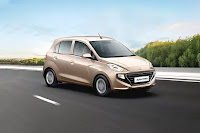Brand: Pee Safe
Company: Red Cliffe Hygiene Private Ltd
Brand Analysis Count: # 597
Pee Safe is a very bold brand. Look at the brand name itself. Its ticks most of the boxes in the theoretical way of looking at the qualities of a good brand name. The brand was launched in 2013 and quickly became a pioneer in the development of a market for branded female hygiene products other than the sanitary napkins.
The Indian personal hygiene market is huge. pegged at around 85000 crore INR ($11 Bn) and growing very fast aided by the recent pandemic. The COVID-19 pandemic has accelerated the adoption of many hygiene products and created opportunities for many players in this segment. The female hygiene category is small at about Rs 2500 crore and the category is dominated by sanitary napkins which are around 3600 crores.
Pee Safe entered the market with a unique product - toilet sanitizer. The brand correctly identified a need in among the women who often travel as well as those office goers who have to use common toilets. The unhygienic toilet seats are a common cause of urinary tract infection which is common in India. The brand quickly gained adoption and became the world's largest selling product within a short period of time.
Buoyed by the success of the seat sanitizer, the brand launched a series of products in the hygiene space like bio-degradable sanitary napkins, menstrual cups, sanitizers, intimate wash, tampons etc. The company uses digital marketing as the main promotion tool. The brand also has television star Anita Hassanandani as the brand ambassador.
Pee Safe has positioned the brand as a hygiene expert and is aiming to be a one-stop solution for all hygiene needs of women. The brand is trying to cement its positioning through educational and informative videos about hygiene. In line with the current trend of brand laddering, the brand has also taken up cause marketing like women empowerment.
One aspect that strikes about the brand is the name. The brand name Pee Safe obviously is constrained by the connection to intimate hygiene. The company has circumvented this issue by following a family brand name brand architecture. The current brand architecture is that all products in female hygiene are named as Pee Safe. Other family brand names are Raho Safe, Palm Safe, Mosquito Safe etc.
The company has launched other products like mosquito repellent, hand wash and under Mosquito Safe brand, cleaning products under Raho Safe brand, hand sanitizer under Palm Safe brand etc.
The smart idea is that " Safe" name is retained to link it to the current famous brand Pee Safe. The only challenge in this brand strategy is the increased cost in developing and nurturing the family brand names. The advantage is that the company is not constrained by the brand name in the launching of new products.





















